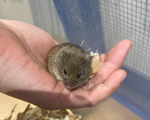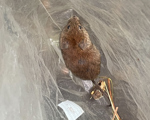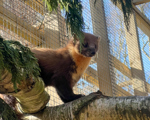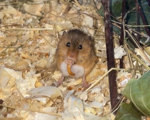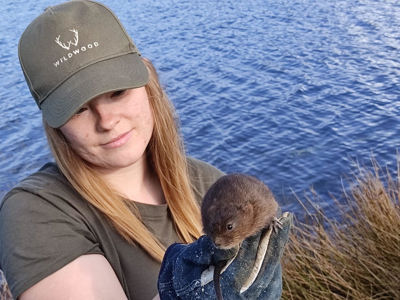
New project could transform small mammal tracking
29th Aug 2025
Our new intern, Jazz Woollard, is taking part in a fascinating project funded by PTES (https://ptes.org/grants/internship-projects/) that could transform the way we track the UK’s small mammals. The aim is to use non-invasive, AI imaging of their footprints, allowing conservationists to understand the presence of species and their population dynamics without disturbing their behaviour or ecology.
Why small mammal populations matter
Understanding small mammal populations is a key part of many conservation projects, especially in the feasibility stage. The traditional method of trapping and handling animals to gather data is time-consuming and fairly invasive. Having a speedy method of gathering data on which species are in a given area will be extremely beneficial for future conservation projects.
Why footprints?
Footprint analysis is a great way to identify which animals are within a given area. Using footprint tunnels, data collection can be done with little to no contact with the animal itself. This method is already common in the UK when surveying for hazel dormice, however isn’t yet a standard method of surveying other mammals.
In the UK we have a diverse range of small mammals, including field, bank and water voles, common, pygmy and water shrews, wood, yellow-necked, house and harvest mice, and hazel dormice. Some species have very similar footprints, therefore distinguishing between them, let alone between males and females, can be challenging.
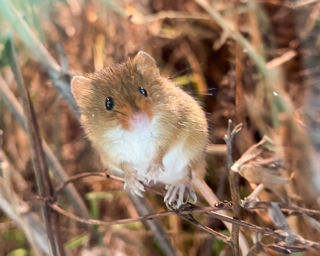
Collecting the baseline dataset
Over the next few weeks, Jazz will gather the baseline dataset needed to train an existing footprint identification technology (FIT), created by WildTrack, to recognise UK small mammals from their footprints.
To do this Jazz will be running small mammals through a tube, using charcoal powder and sticky paper. The animals will walk through the charcoal and then transfer this onto the paper as they walk, leaving behind a (hopefully) perfect footprint.
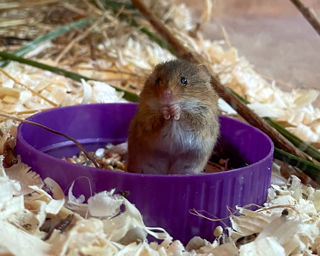
The role of AI
The goal is to train AI to identify not only the species but also the sex of the individual, based on unique footprint characteristics. To do this, we first need a robust baseline dataset: lots of footprints from known individuals.
The AI system has been developed by US-based non-profit conservation organisation WildTrack (https://www.wildtrack.org/). Starting with larger mammals such as rhino, WildTrack have developed a Footprint Identification Technology that has the potential to recognise individual animals from a single footprint, allowing for a highly sophisticated, quick and non-invasive alternative for wildlife monitoring.
FIT comprises two analytical steps:
-
An AI pipeline
-
A statistical method using morphometrics (measurements of the footprint)
Both require good quality footprint images.
Next steps in the project
Before the UK’s small mammals can be tracked using FIT, the AI system needs to be trained to recognise them. And for this, a considerable number of photos need to be taken.
Over the next few weeks, Jazz will be photographing the footprints of harvest mice, field voles, bank voles, pygmy shrews, water shrews and common shrews among other small UK mammals.
For each species, the aim is to track 20 females and 20 males and take images of the footprints of each of those individual animals!
The images will be collected from our on-site captive animals as well as in the wild, where trapping will be necessary, as it’s essential to know the gender of each animal and to use the same animals. Jazz can then identify males and females prior to footprint collection, and this can be programmed into the FIT technology to look for patterns and distinctive characteristics between same-sex footprints.
The potential impact
If successful, this project should transform how we monitor small mammals in the UK. Instead of lengthy analysis or invasive trapping, conservationists could photograph footprints collected in tunnels and use FIT to quickly and accurately determine the species and sex.
Knowing where males and females are within a given area will help to gain an understanding of population dynamics, a vital part of assessing feasibility of conservation projects.
Kent Mammal Group
Alongside this project, Jazz will be inputting historical data collected by Kent Mammal Group. Analysis of this data aims to help improve data collection techniques through assessing the success rate of surveys depending on factors such as number of traps, surveyor experience, number of days trapping and more.
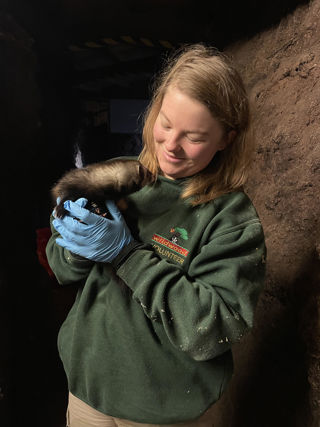
About Jazz
Jazz studied Animal Behaviour and Welfare at university and did a placement at Wildwood in 2022 with the conservation team. She has also worked as conservation and hoofstock keepers.
Throughout university and working here at Wildwood she has worked to gain extensive volunteering experience, completing surveys and attending regular volunteer days including at Stodmarsh Nature Reserve.
Jazz’s internship at Wildwood Kent is being funded by the People’s Trust for Endangered Species (PTES) and the Kent Mammal Group.

